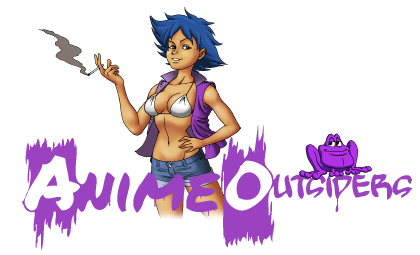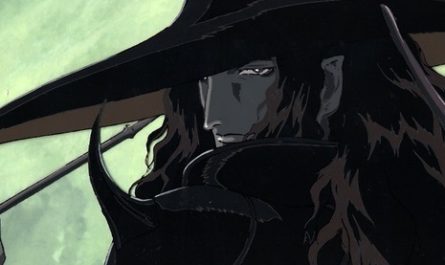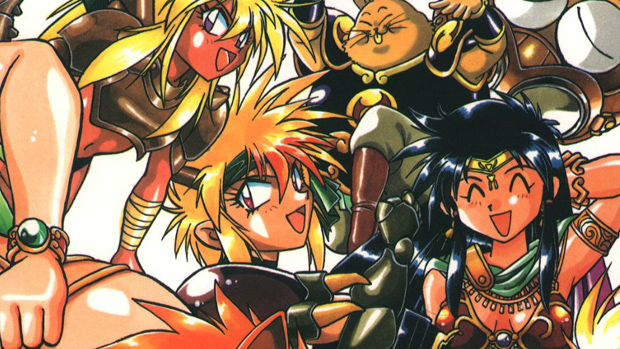Dean Talks Anime(?): Why We Can’t Have Nice Things
Part One: Animated Films
By Christopher Kinsey
Recent events in the animation industry serve to remind me of the constant rut animation in the USA has been continuously in since the turn of the century. Kids’ animation has always had an appeal, and will exist as long as there is a need for toys and quiet in a household. Regardless of conditions the large market for kid-friendly cartoons means there will always be something of quality in the mix, no matter how much the staff on the production end change the culture of animating. But what about animation for older people? From teens to young adults there seem to be two paths, either give up on cartoons until you decide that Family Guy is worth giving up part of your Sunday off or watch anime, which has a variety of themes and genres to satisfy all kinds of tastes. American animation just can’t compete, and it shows as more and more young adults turn to anime and manga to scratch an itch for the fantastical that just doesn’t often exist in studios based in the USA.

Great-Grandpa had a waifu.
Let’s go back to the beginning. In the earliest days of animation young cartoonists were snapped up by the likes of Walt Disney, Max Fleisher and various smaller studios. The earliest distributed cartoons were mostly a series of funny gags meant to amuse anyone in the theater. As time went on the two biggest animation studios swerved greatly, with Disney leaning towards technical achievement and the safety of keeping things tuned to a younger audience while Fleisher’s crews took inspiration from the youth scene, including jazz and sexuality. Betty Boop is the most notable example and was used extensively when the Hays Code was lowered across the movie industry in 1922. Animators across the board modified their cartoons to fit the code, with Disney doubling down on tailoring kids films, Fleisher re-designing Betty Boop and reinvesting in new animation technologies while the Warner Brothers studio division created a new office culture that worked out gags that would appeal to anyone catching the shorts before the main feature.

Spoilers
Much like comic books after Seduction of the Innocent, animation lost any foothold with becoming a respected and useful medium to explore themes beyond kid and family entertainment. In 1968 the Hays Code was eliminated, and the MPAA began the film rating system as we know it today. But this would not move the larger animation studios to experiment, this had to be a grass-roots exploration and the late 60s reflected exactly where this new adult animation would be taken. The most notable examples of underground animation were “Bambi Meets Godzilla” which was played for shock value and “Escalation” which criticized the Vietnam war and Lyndon Johnson. Both were produced in 1968, rather short, and played all over the country in college settings. The first adult aimed animated short from a studio was called “Thank You Mask Man” in 1969 to precede a Algerian-French film called Z. The short is an animated version of a Lenny Bruce routine, and was almost considered to be nominated for an academy award. However somewhere along the production line the film was never shown to the committee, with someone in the projection booth objecting to the subject matter and never showing it.

Animation archeologists credit this as the unfortunate beginnings of yiffing for the masses.
But the talk was still in the air, and there was interest for some of that old indie movie street credit even then. So we come to both the savior and destroyer of hope for mature animation in the USA: Ralph Bakshi. Bakshi started his career with Terrytoons, and began directing films both there and for Paramount’s Famous Animation studio right as the studio closed up. As a side note, Bakshi had a brush with early imported anime, directing an opening for the 8th Man cartoon more suited for American audience. Tired of the studios, Bakshi began his own animation company: Bakshi Productions. His studio’s earliest works were Rocket Robin Hood and the second half of the 60s Spider Man cartoon. As the 70s turned Bakshi produced both commercials and educational shorts, but wasn’t satisfied. He wanted to produce something personal and wanted to make a parallel of a daily life in New York City, but not having experience in Hollywood was a liability and he needed a time tested underground hit. That was where the counter culture cartoonist Robert Crumb comes in. Bakshi optioned Fritz The Cat to be animated. Anyone familiar with Crumb at this point will tell you this won’t be any sort ot typical animated film, and it was riding the counter culture and exploitation film wave to a great success.

You know, for kids!
Bakshi finally had the success and clout to produce a string of adult themed films in the 70s including his dream film Heavy Traffic, Coonskin, and Hey Good Lookin’. Other studios tried to produce their own “dirty” cartoons but to limited or no success. Bakshi then decided to create high fantasy pieces leaning first on a pitch that would become the very film where all of this good will falls apart. Wizards is indeed an interesting film with some interesting animation, techniques and themes… but it is certainly not the Disney-buster he talked it up to be. It was more of his examinations of the human condition in America at the time, just in a fantasy skin and oozing that underground violence and sex jammed together with old cartoon tropes. At the same time Bakshi decided to tackle an animated version of Lord of the Rings which tried, and failed, to compress the entirety of the trilogy into one movie, and even then it could not be done. Even at a large profit United Artists refused to fund the sequel that would finish the tale. Bakshi would return to tales of the American experience with American Pop and one more stab at the realm of fantasy films with Fire and Ice.

Please, whoever owns this soundtrack… release it.
So the entirety of Bakshi’s career at this point showed producers that adult animation might have been a fad. Something to fuel the counter culture of the late 60s and mid 70s, but nothing that could really pull a consistent audience. Not to say it wasn’t tried. In 1981 we got the animation anthology based on the French comic series Metal Hurlant. Heavy Metal was already a popular translated print in the US with the backing of the popular National Lampoon magazine. However, this film kind of marked the swan song being as it wasn’t really liked in it’s own time. With it’s European comic themes and soundtrack that featured some great, and not so great, songs it’s a film that can certainly be a hard sell to a traditional audience. The two last gasps that sprung from the Bakshi/counterculture animation were Rock & Rule which pushed animation techniques to it’s limit, nearly destroying Nelvana animation in the process and Starchaser: The Legend of Orin which again pushed the technical aspect of animation at the time but lost itself as a Star Wars ripoff.

I was 5. I got over Prime, but I missed Prowl. He was my favorite.
But none of that was as bad as when we tried to modify kids cartoons to have a few more detailed themes. Heavy Metal and anime in general wasn’t picked up much by the general public, but the animators in the industry certainly noticed. When it came time to make animated features for the popular toy line Transformers they definitely took inspiration from both. With a heavy metal and popular music inspired soundtrack, action sequences leaned on by Toei Animation in Japan, and your beloved toys straight up being killed and the new characters having to deal with this trauma may seem like old hat to kids who watch cartoons these days, but in 1986 it was such a sharp turn audiences and Hollywood could not handle the backlash. There was even a, wait for it, swear word! Distraught mothers poured letters into Hasbro’s mail room. The G.I.Joe movie that was already animated and had the same theme of killing off the old leader to make way for the new has to be altered immediately before the release and got it sent directly to video.

Nice animation industry… Shame if someone were to take it’s audience…
This let Japan pick up the ball and run with it. At the same time as Starchaser crashed and burned the Urusei Yatsura movie series was establishing Japanese animation in theaters and a mere two years later came 1987’s Akira. With the popularity of shows like The Simpsons some adult aimed cartoons were launched to theaters in the 90s, most notable being linked to other properties on TV like South Park, Beavis & Butt-Head and everyone’s favorite Bebe’s Kids. The 2000s and the 10s are both mired in US animated films that either have an anime flair to it or are attached to a comic in some way, and either released directly to DVD or a streaming service. No one wants to touch an animated film unless it’s a lighthearted or heartwarming kids comedy.

Savior of the industry?
But there is a small ray of hope. Genndy Tartakovsky. You of course know him from some of the best work to come out of Cartoon Network Studios like Dexters Lab, Samurai Jack and the best part of the Star Wars prequels: Clone Wars (With the lack of “The” in the title). Recently he’s been known for three things: ending Samurai Jack in an awesome manner, unfortunately failing to get us a very cool animated modern Popeye, and directing all the Hotel Transylvania films. As a dad, I was dragged to all three of these films and I have to say Tartakovsky is probably the reason I didn’t saw off my own head. And it was all worth it, because he has two films that might… MIGHT revive interest in animation for adults. There will be an action/adventure film called Black Knight and an R-rated film called Fixed!. Details are still really early on these films, but with the work he’s done with television animation he might be the man for the job. Of course the television side of adult animation is it’s own story, and means this little article needs a sequel.
Dean The Adequate urges you to check out both Heavy Metal, Rock&Rule and even some of the Bakshi films to get a good feel on how things might have been. And when you’re done that, and feeling like things weren’t so bad… Go watch Cool World and fall right into the pit of despair all of us old cartoon fans live in. But I will say this, there is one thing the modern “Otaku” could certainly learn from Cool World. “Noids don’t have sex with doodles!”



